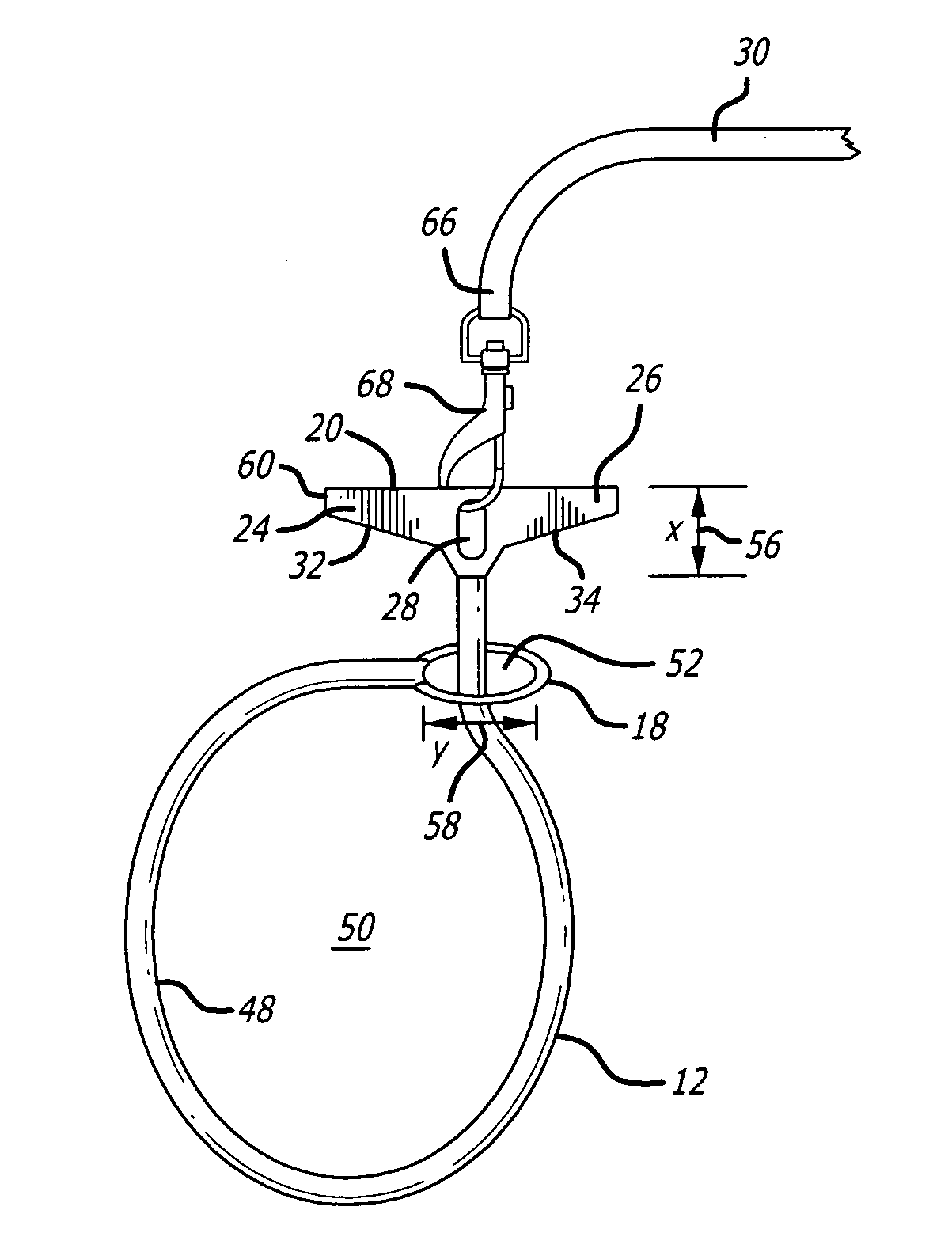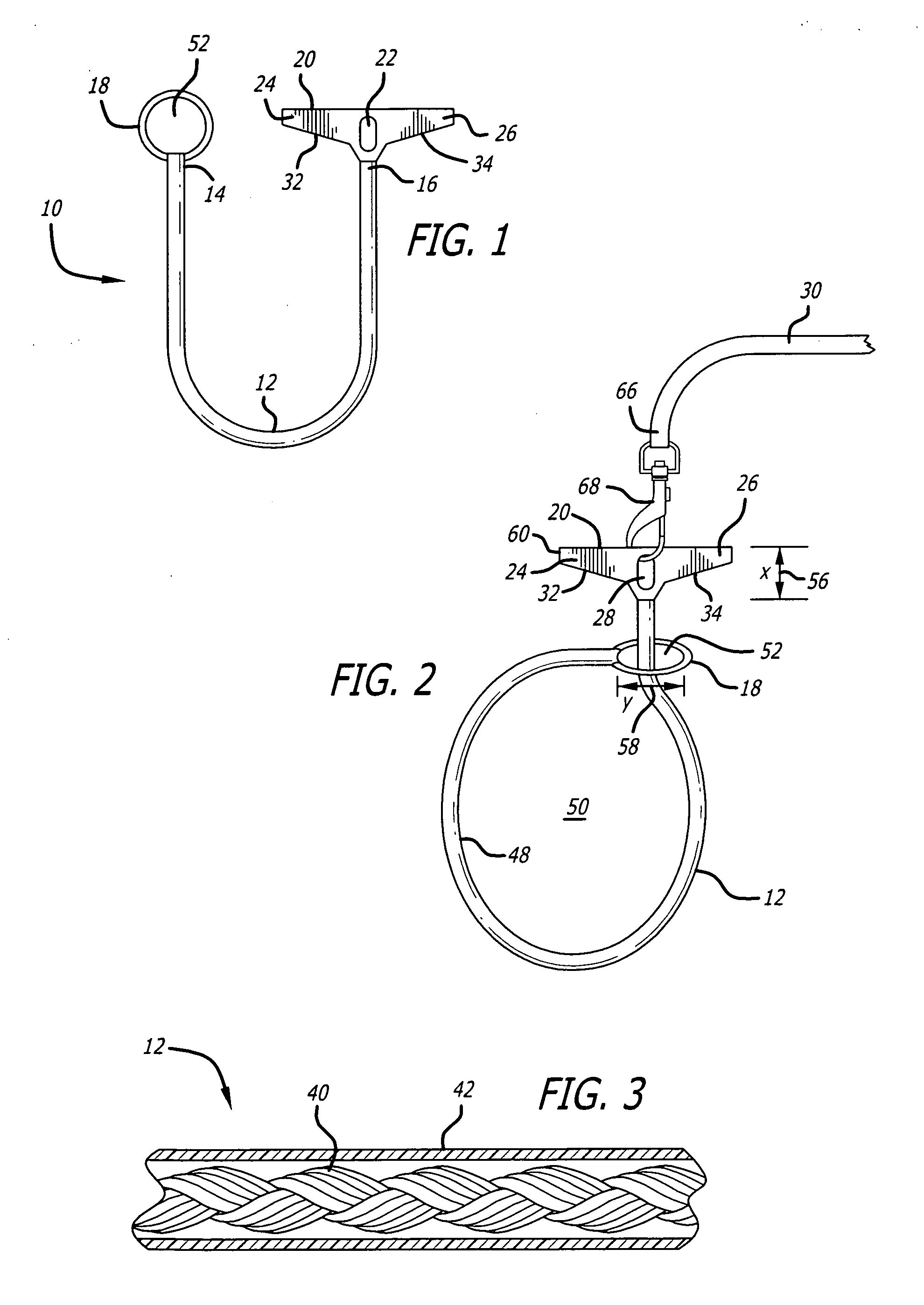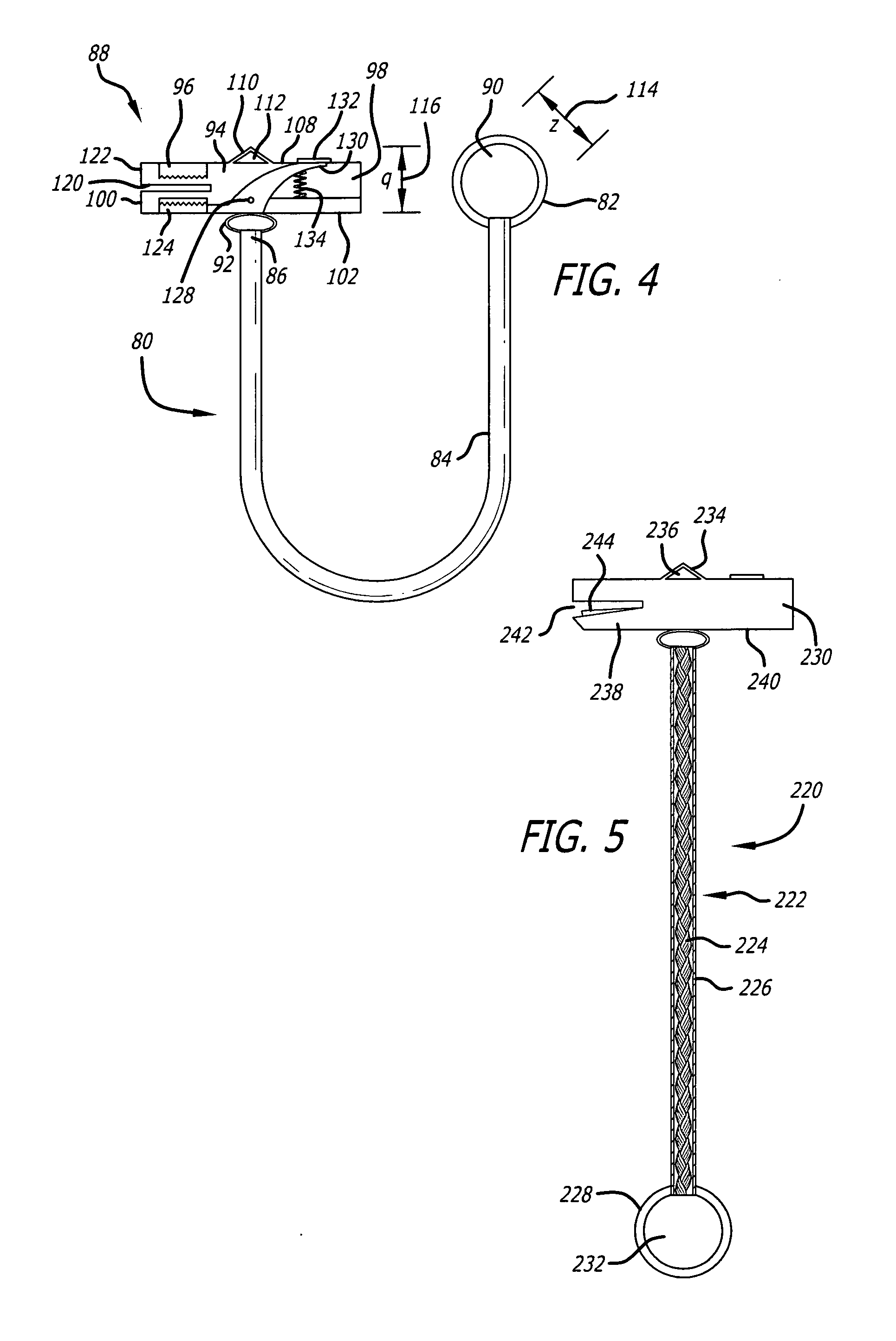Dog collar
a collar and dog technology, applied in the field of dog collars, can solve the problems of limiting the chain, the size of the loop, etc., and achieve the effect of reducing or minimizing the chaffing of the skin and the fur damage, and quick mechanism and procedur
- Summary
- Abstract
- Description
- Claims
- Application Information
AI Technical Summary
Benefits of technology
Problems solved by technology
Method used
Image
Examples
Embodiment Construction
[0039]The invention comprises a collar for a dog. The collar comprises an elongate cord having connector members at each end which can be releasably secured to each other so that the cord defines a closed loop which, in use, surrounds the neck of the dog.
[0040]Referring to FIG. 1 of the drawings, there is shown a dog collar 10 comprising an elongate cord 12 having an end 14 and an opposite end 16. The end 14 has a metal ring 18 attached thereto. The end 16 has a metal T-bar 20 attached thereto, the T-bar 20 having a central portion 22 and a pair of lateral wings 24 and 26 extending outwardly from the central portion 22. The central portion 22 includes an aperture 28 for releasably clamping the T-bar 20 to a leash 30, as better shown in FIG. 2 of the drawings.
[0041]Each lateral wing 24 and 26 has an abutment surface 32 and 34 respectively, which engages the metal ring 18, as will be described below.
[0042]As regards the elongate cord 12, a detail of the cord can be seen in FIG. 3 of t...
PUM
 Login to View More
Login to View More Abstract
Description
Claims
Application Information
 Login to View More
Login to View More - R&D
- Intellectual Property
- Life Sciences
- Materials
- Tech Scout
- Unparalleled Data Quality
- Higher Quality Content
- 60% Fewer Hallucinations
Browse by: Latest US Patents, China's latest patents, Technical Efficacy Thesaurus, Application Domain, Technology Topic, Popular Technical Reports.
© 2025 PatSnap. All rights reserved.Legal|Privacy policy|Modern Slavery Act Transparency Statement|Sitemap|About US| Contact US: help@patsnap.com



